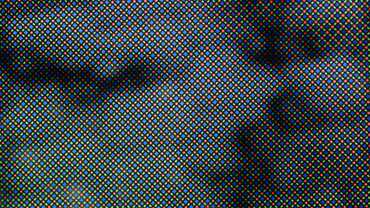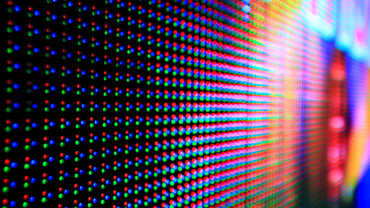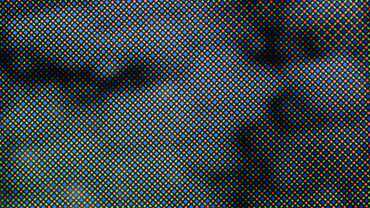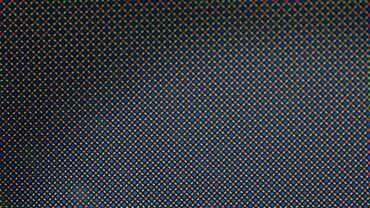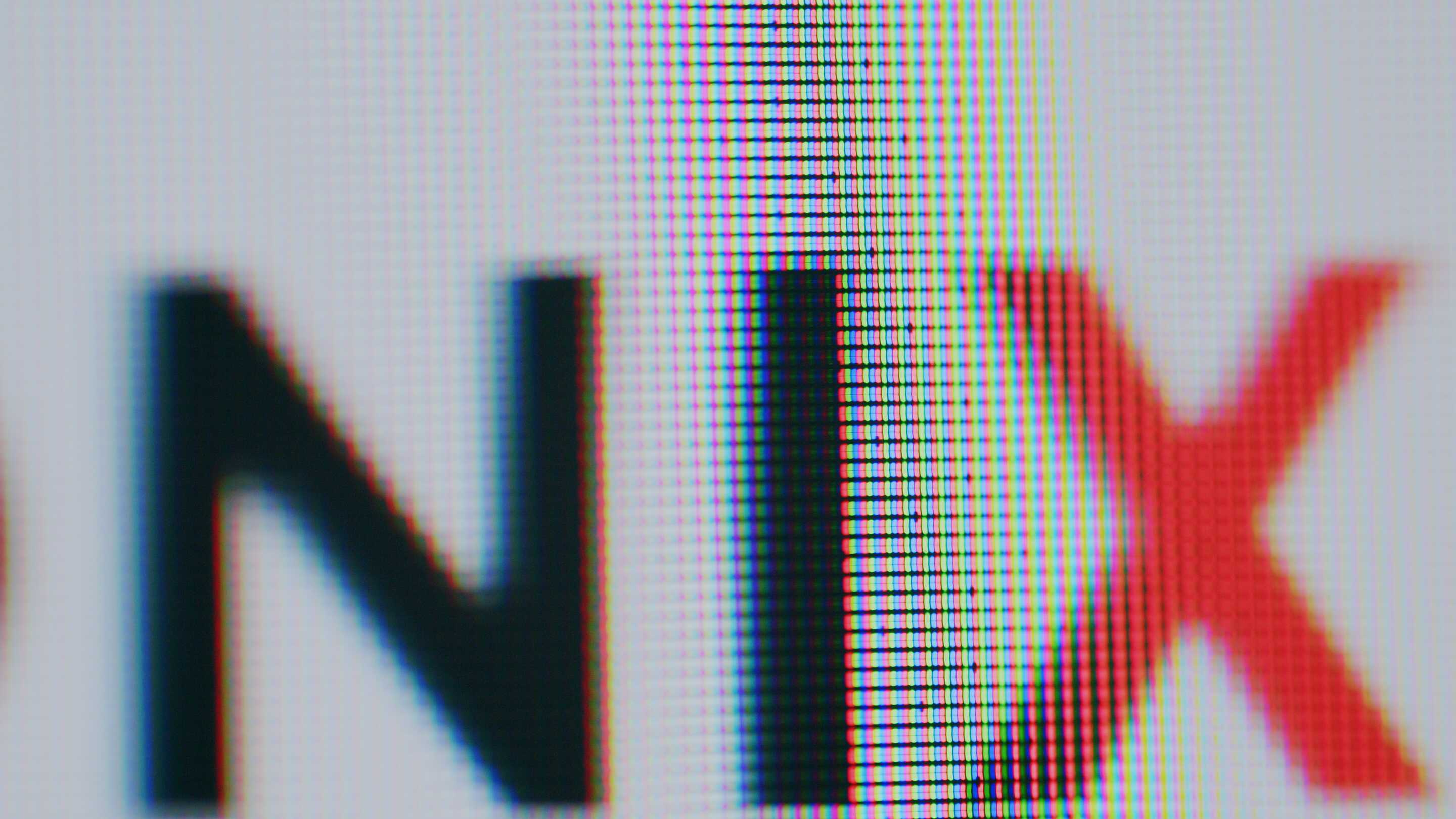了解像素的基本知识
像素并不是具有全色谱的小方块。相反,它们是由排列成 RGB 阵列(红、绿、蓝)的子像素组成。这些子像素发出的光通过加法混合产生我们看到的颜色。这些子像素非常小,肉眼几乎看不到。通过调整每个子像素的强度,组合后的发射光可以产生多种颜色。通过精确控制每个子像素发出的光线,这种相加混合技术可使屏幕显示出精细的图像和丰富的色彩。
OLED 技术采用多种像素排列方式,每种排列方式都是为满足独特的显示要求而量身定制的。这些配置对色彩准确性、功耗、制造复杂性和成本等各个方面都有影响。了解这些差异对于为您的应用选择理想的OLED 显示器 至关重要。
为什么 OLED 像素的尺寸不同
在这种布局中,红色、绿色和蓝色子像素的大小各不相同。蓝色子像素最大,因为它们的光发射效率最低。相比之下,绿色子像素最小,因为它们的发光效率最高。这种尺寸差异对于优化显示屏的性能至关重要,既能确保准确呈现每种颜色,又能保持 OLED 屏幕的整体亮度和能效。
标准 RGB 条纹
最直接的 OLED 像素排列方式是 RGB 条纹。这种配置将红色、绿色和蓝色子像素排列成一条水平线。它反映了传统LCD 显示器的结构,因此制造商和开发人员都很熟悉。RGB 条纹以色彩保真度高、清晰度高而著称,因此在色彩准确度要求极高的智能手机、显示器和电视机上大受欢迎。
Pentile Matrix:效率与寿命
五分矩阵是另一种常见的 OLED 像素排列方式。与 RGB 条纹不同,它不使用均匀分布的子像素。相反,它采用的蓝色和红色子像素比绿色少。这种设计可降低功耗并延长显示屏的使用寿命,因为蓝色子像素的衰减速度往往更快。Pentile 排列方式对于对能效和寿命要求较高的设备(如可穿戴技术和智能手机)尤为有利。
钻石像素:优化高分辨率
随着屏幕分辨率的不断提高,钻石像素排列已成为保持图像质量的一种解决方案。这种布局将子像素置于菱形网格中,提高了清晰度和细节,尤其是在 4K 和更高分辨率下。菱形像素布局尤其适用于 VR 头显和高端显示器,因为在这些设备中,每个像素都能营造出身临其境的细腻视觉体验。
光学显微镜的高分辨率截图显示,iPhone 15 Pro 采用了钻石像素布局,这在许多 OLED 显示屏中很常见。红蓝交替排列形成 45 度对角线对称,减少了混叠和伪影。这种布局最大限度地提高了子像素的密度,使每英寸像素(ppi)更高,显示更精确。
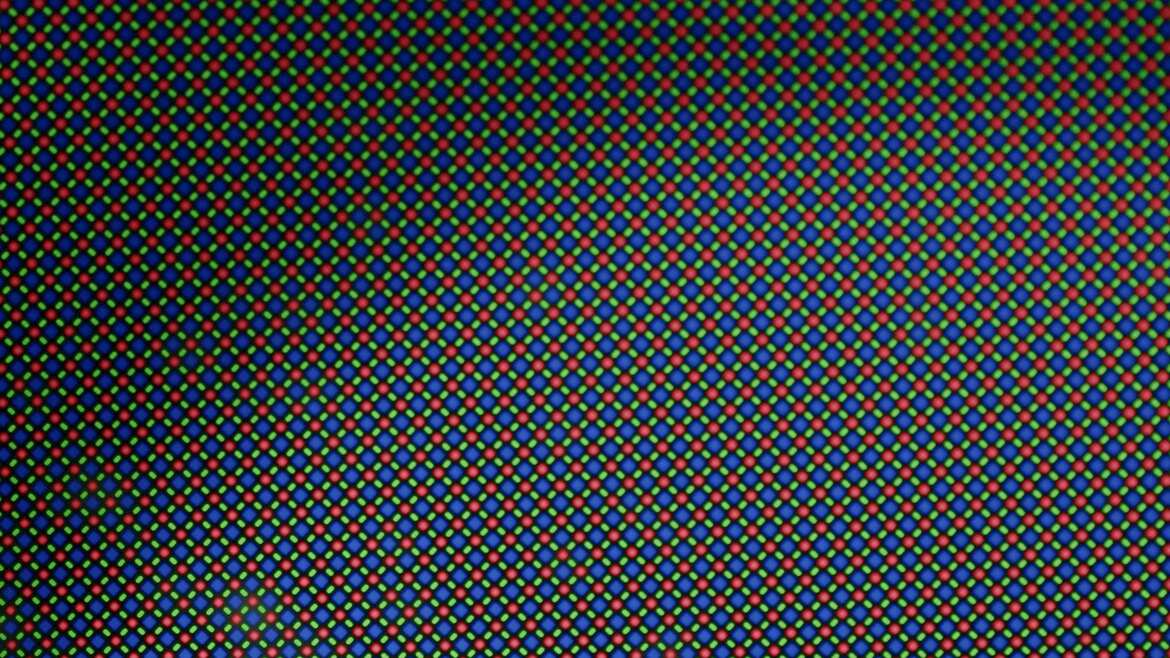
RGBW:提高亮度,降低功耗
在对亮度和能效要求极高的应用中,RGBW 像素排列在标准 RGB 三像素的基础上增加了一个白色子像素。这个额外的子像素可提高整体亮度,而不会对功耗产生重大影响。RGBW 通常用于户外显示屏和标牌,因为在阳光直射下的可视性至关重要。
四像素排列:扩展色域
四像素排列包含一个额外的彩色子像素(如黄色或青色),可扩大显示屏的色域。这种配置可实现更生动、更准确的色彩还原,是高端专业显示器和电视机的理想选择。通过覆盖更广泛的色彩范围,四像素显示器可为要求卓越色彩精确度的应用提供更佳的观看体验。
统一性和制造复杂性的挑战
每种 OLED 像素排列都会带来一系列制造挑战。在整个显示屏上实现均匀性非常困难,尤其是随着分辨率的提高和子像素排列的复杂化。制造商在选择像素配置时必须平衡性能、成本和产量。了解这些权衡对于旨在提供高品质显示器的开发人员和产品所有者来说至关重要。
为专业应用定制像素排列
除了常见的配置外,还可以为特殊应用设计定制像素排列。例如,医疗成像显示器可能需要高度精确的色彩再现和灰度性能,因此需要独特的像素布局。同样,汽车显示器需要承受恶劣的环境条件,同时保持可视性,这就需要定制像素设计。在Interelectronix ,我们擅长创造定制的 OLED 解决方案,以满足客户的特定需求。

